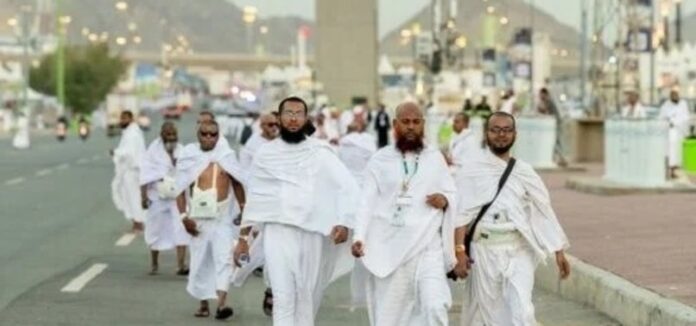Over 1.6 million Muslim pilgrims gathered in Mina, near Mecca, early Friday morning to perform the symbolic “stoning of the devil” ritual, marking the final major rite of this year’s hajj. As Eid al-Adha celebrations began across the world, pilgrims moved in waves through the valley, calmly tossing seven pebbles each at three concrete pillars representing the devil’s temptation of Prophet Abraham.
Many set out before sunrise from the tent-filled settlement in Mina, taking advantage of the early morning’s cooler temperatures to complete the ritual. Among them was 34-year-old Wael Ahmed Abdel Kader from Egypt, who described the experience as smooth and quick. Another pilgrim, Howakita from Guinea, shared her joy at performing the rite in Mecca, saying the moment filled her with pride and peace.
The day before, pilgrims had gathered at Mount Arafat, where the Prophet Muhammad is believed to have delivered his final sermon. Despite sweltering heat, many climbed the rocky hill to offer prayers and read verses from the Quran. Attendance began to thin around noon following official warnings to avoid the sun between 10 a.m. and 4 p.m.
Saudi authorities put in place several heat-control measures and stepped up security around key religious sites. This included a crackdown on unregistered pilgrims, who in previous years have faced life-threatening conditions due to lack of shelter and basic services. Last year’s hajj was marred by over 1,300 deaths during extreme heat, with most of the victims reported to have entered Mecca illegally.
This year’s turnout was the lowest in more than 30 years, outside of the COVID-19 era. Official numbers show a drop from 1.8 million pilgrims last year. The Saudi government uses a quota system to issue hajj permits by country, but steep costs often drive some individuals to attend without proper authorization, despite the risk of arrest or deportation.
The Mina valley, where the stoning takes place, was the site of a deadly stampede in 2015 that killed over 2,300 people, one of the worst disasters in hajj history. Since then, crowd control efforts have been improved to reduce risks during the high-traffic ritual.
Hajj and its smaller counterpart, umrah, bring in billions of dollars annually for Saudi Arabia and are a major source of religious and national pride. The completion of hajj coincides with Eid al-Adha, a holiday marked by animal sacrifices and large family feasts.

